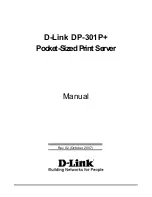
Diagnostic
flowcharts 106
Network connection problems
1.
Network not working
o
Be sure that no loose connections exist between the LAN port and the system board.
o
Be sure no loose connections exist between the LAN port and the LAN cable.
o
Determine if the software is causing the problem.
o
Replace the LAN cable with a LAN cable that is known to be functioning properly.
o
Use the latest LAN card driver when installing the OS, and be sure the server and the OS support
the controller.
o
Be sure a valid IP address is assigned to the controller and that the configuration settings
are correct.
o
Restart the server to determine if the network starts working.
2.
Network stops working
o
Be sure no loose connections exist.
o
Be sure the correct network driver is installed for the controller and that the driver file is not
corrupt. Reinstall the driver.
o
Test the network cable to verify that it is functioning properly by replacing it with a cable that is
known to be properly functioning.
o
Be sure the network controller is not damaged.
o
Reinstall the network driver.
o
Restart the server to determine if the network starts working.
3.
Network stops working when an adding an external board
Action:
o
Be sure no loose connections exis.t
o
Be sure the server and OS support the external board.
o
Be sure the new external board does not change the server configuration.
o
Be sure the correct driver is installed for the network controller.
o
Reinstall the network driver.
o
Restart the server to determine if the network starts working.
External device problems
Mouse and keyboard problems
Be sure no loose connections exist.
Be sure the keyboard or and mouse is connected to the correct pors
t .
Be sure the keyboard or mouse is clean.
Be sure legacy support for USB is enabled in the BIOS.
Replace the device with a known working equivalent device (another similar mouse or keyboard).
Restart the system and determine if the input device functions correctly after the server restarts.
















































